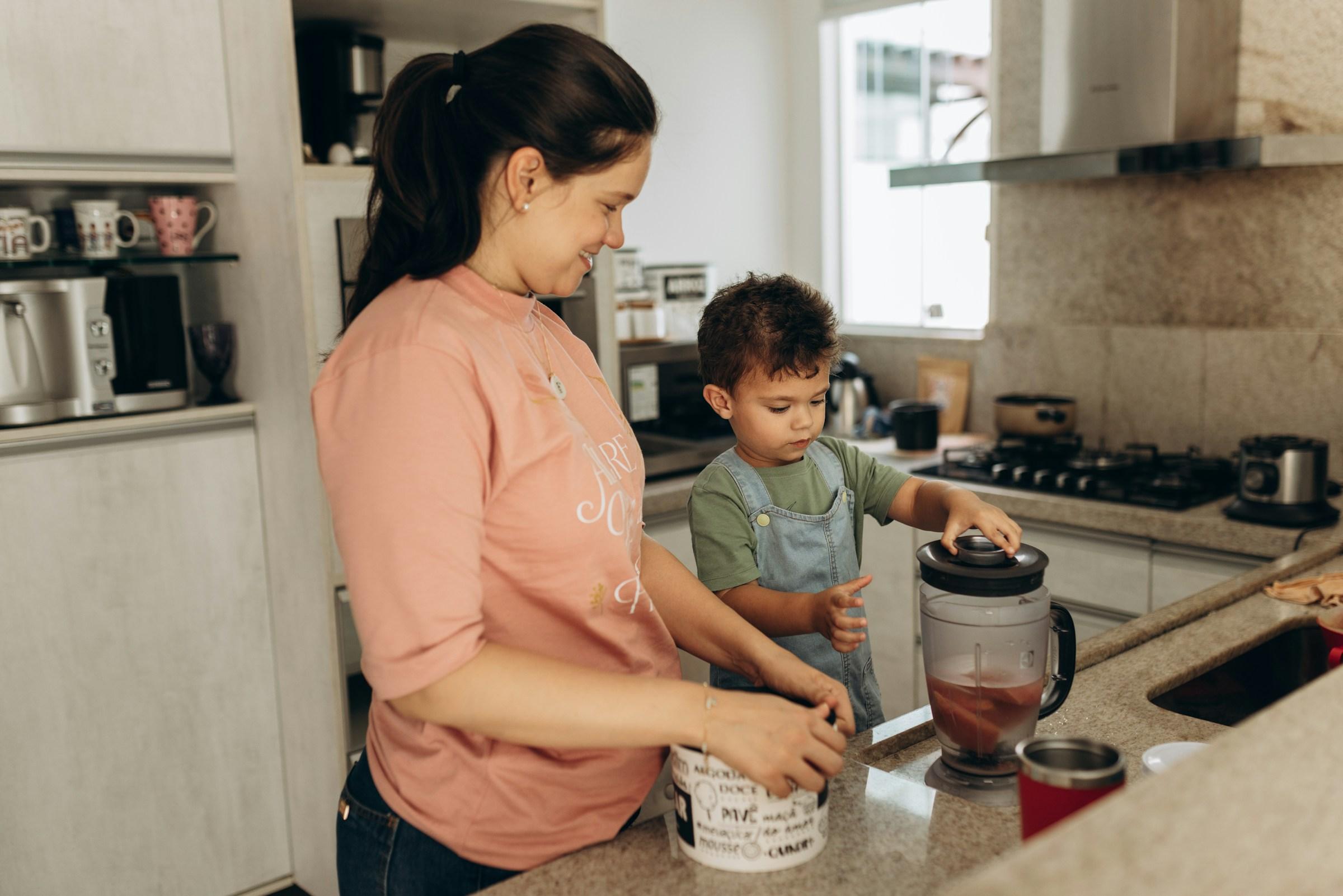The camera frame that often introduces the tradwife world makes a simple promise. A polished pot catches morning light, a loaf opens along its scored seam, a dress dries on a wooden rack, and nothing on screen is in a hurry. The scene is not only about nostalgia, it is an invitation to imagine a life that moves to a steadier rhythm. To outside eyes the label looks like a throwback, a costume assembled from aprons and thrifted glassware. To the people who choose it, the pull is less about turning the clock backward and more about recovering control of time, space, and attention. The benefits that appear in their stories are practical and emotional at once, a set of daily outcomes that add up to a coherent life.
The first benefit that comes up in almost every account is pace. Not slow in the sense of being idle, but slow in the sense of being deliberate. Paid work often fractures a day into dozens of competing demands, each one arriving through a ping or a meeting link. The domestic rhythm that tradwife pages celebrate replaces this with repetition and sequence. Breakfast is laid before screens are opened. Beds are made before the door is answered. Laundry belongs to a certain afternoon, baking to a certain morning, dinner to a certain hour. Repetition becomes a metronome, and the predictability becomes a form of comfort. People who have spent years switching between tasks describe an almost physical relief when a day’s shape is familiar. The body learns what to expect and, in turn, offers its energy on schedule. The benefit is not that there is less to do, but that there is less to negotiate with yourself about what to do next.
Alongside rhythm sits the benefit of mastery. The internet has long trained viewers to ignore domestic labor or treat it as a soft skill, yet on screen you can watch technique in motion. A cook adjusts hydration by touch. A seamstress turns a thrift store find into a dress that fits like a memory. A gardener understands the stubbornness of certain soils and the patience required by seedlings. When you repeat tasks on a schedule, you start to see the difference between doing them and doing them well. You learn what crispness sounds like when a roast is ready. You read a stain the way a mechanic reads an engine noise. Mastery builds pride, and pride in turn beckons attention. Comments gather under the posts with requests for methods and measurements, and the person at home becomes a teacher who did not need to leave the kitchen to find a classroom. For some, this public recognition becomes income. A video becomes a downloadable guide, a pantry tour becomes an affiliate storefront, and home turns into a studio where skills are cataloged and sold. Even when money is not the goal, the acknowledgment of competence changes how a person feels about hours that used to be dismissed as invisible.
The third benefit lives where the private and the public overlap. Domestic work is traditionally kept out of sight, which can flatten its value in a culture that rewards what is tallied and measured. Social media disrupts that invisibility. A well run morning becomes visible, and once visible, it becomes legible. The person who makes the house run can trace a line from effort to outcome, from planning to peace at dinner time. The household itself becomes a kind of living portfolio. For some couples, that visibility reduces friction. When roles are clear and appreciated, there are fewer daily negotiations about who is meant to carry which load. Clarity does not require rigidity, it demands honesty about strengths and preferences. A couple that understands what each person is carrying is better equipped to trade tasks when life changes. The benefit is not control over another person, it is the clean handoff that reduces the background hum of resentment.
Health threads through these stories as a quiet gain rather than a dramatic transformation. When meals come from your own kitchen more often, the rhythm of eating changes. Breakfast shows up before caffeine anxiety, lunch is planned rather than improvised, and dinner does not require a delivery app that arrives late and cold. Sleep follows from routine, not from collapse. There is time for a real walk because the late meeting never materialized, and daylight can be used for an errand or a stretch on the floor. None of this is glamorous, and it is precisely the lack of glamour that makes it work. Home is designed to serve bodies rather than screens. The nervous system notices the difference when the day ends with a table cleared rather than a laptop that refuses to close.
Belonging is a social benefit that shows up both online and offline. The internet acts as a village for people who might not have one nearby. The uniform of cotton dresses and braided hair is a signal, but it is also a language. Sourdough starters have names and histories, pantry jars are labeled with a kind of affection, linens are mended as if they matter. In the comment sections and group chats, practical tips turn into friendships. Someone in one city teaches someone in another how to remove mildew from curtains, and a week later they are exchanging notes about raising toddlers or coping with grief. Offline, the same skill set positions the home as a hub. The person who knows how to feed ten people on a weekday becomes the person who brings a neighborhood together. Birthdays drift toward the living room that is always ready to host. The result is a thicker social fabric, stitched out of meals shared and favors exchanged, which can be a balm in a time when many people report loneliness as a steady ache.
Meaning is another benefit, although it is harder to measure. Many people who choose a tradwife path speak about service without embarrassment. They count the day not in sales calls, but in warm plates, clean sheets, and a partner who leaves the house with lunch in hand. The tally is personal, and it often feels more immediate than metrics at work that drift into quarterly reports. Meaning also arrives through ritual. If faith is central, then the week has a shape and the year has a narrative, which turns ordinary tasks into acts that sit inside a moral story. Even without religious language, rituals confer a quiet dignity. Sunday looks different from Thursday. Holiday meals have logic and lineage. Children can sense the recurring patterns, and adults can feel held by them.
Money is part of the conversation, and it complicates the picture while offering its own set of benefits. A single income household is a risk in many cities, a fact no caption can erase. Yet the home economy is not a passive recipient of cost. When one person is focused on running the household, waste becomes easier to see and easier to reduce. Batch cooking stretches ingredients without stretching patience. Repairs replace replacements, and the savings are recorded like small victories. Bulk purchases align with actual consumption rather than impulse. The benefit here is control. When time is used to plan and maintain, spending follows intention instead of urgency. Some families will find that the tradeoff does not work for them, which is an honest conclusion. Others will post screenshots that prove a well managed household can buffer a volatile world.
Parenting amplifies this calculus. Proximity is a benefit that cannot be stored or revisited. Being at home means witnessing the small moments that evaporate during a commute. A child’s first attempt at tying a shoe, a sudden story about playground politics, the brief afternoon sadness that can be soothed by a snack and a conversation, these are not scalable, but they are deeply real. At the same time, the mental load that comes with managing school forms, appointments, and the endless flow of small logistics can rest too heavily on one set of shoulders if a couple is not careful. The households that thrive on this path describe the importance of recognition and redistribution. The benefit is fewer morning scrambles and calmer evenings, not one person’s exhaustion. The way those benefits are achieved varies by family, and the internet image often hides the effort behind the calm. What remains consistent is the value of presence.
If online attention enters the picture, another benefit emerges. The daily proof of competence becomes credibility, and credibility can become a microbrand. A weekly baking video turns into a newsletter, which becomes a modest course, which becomes a community that pays for its own upkeep. Not every person will find this path, and not every person will want it, yet the possibility itself shrinks the old dismissal that domestic labor is without market value. The home becomes a studio without sacrificing its role as a sanctuary. The work that once vanished into the background becomes teachable and, at times, billable. The person who stays home to maintain a household can also be the person who publishes useful knowledge to a large audience. The modern economy has many doors, and some open right from the kitchen table.
The tactile nature of this life brings its own internal reward. Kneading dough or ironing cotton pulls attention into the hands. Dusting a bookshelf turns into a small act of curation. Folding a towel with care does not make headlines, yet it quiets the part of the brain that spends the rest of the day forecasting what could go wrong. In that quiet, the mind resets. People who live this way describe a relief that does not depend on a spa day or a flight to a distant resort. The acts that return them to themselves are already in the room, already waiting on the counter. Touch becomes a form of attention that the screen cannot counterfeit.
There is even a subtle benefit in the uniform that this identity often adopts. The cardigan, the apron, the muted palette, these are not simply fashion choices, they are a way to reduce decision fatigue. When your days already ask you to be thoughtful about dozens of details, it can be a relief to let clothes function like a kind of shorthand. The uniform says who you are in this space before you speak, which returns more energy to the tasks that matter. Far from being a surrender to conformity, it can be experienced as an embrace of coherence. It is the visual expression of the same desire for rhythm that shapes the rest of the day.
None of these benefits erases the realities that critics name with concern. Unpaid labor can be exploited when a partner or a community treats it as an entitlement rather than a contribution. Economic shocks can punish single income households. Illness can upend the best routines. The images on social media can blur the line between truth and performance. The people who live well inside this role tend to acknowledge these facts. They speak about the importance of agreements that are explicit, about the need for skills that can be reactivated if paid work becomes necessary, and about the humility to adapt when life changes the plan. Their confidence does not come from denial, it comes from the way benefits compound when they are pursued on purpose.
What the tradwife trend reveals, at its best, is not a blanket prescription, but a map of priorities. The desire for days that make sense, the pleasure of doing familiar tasks with increasing skill, the comfort of shared rituals, the joy of feeding people you love, the peace that follows from clarity about who carries what, these are not relics. They are live needs in a world that often makes life feel more complicated than it needs to be. For some people, the home is the best laboratory for meeting those needs. For others, paid work offers the same satisfactions. The labels matter less than the outcomes. What matters is whether a life feels legible to the people living it.
The benefits of being a tradwife, as described by the people who choose it, do not rest on the fantasy of a perfect kitchen or a moral superiority wrapped in linen. They rest on daily acts that create order, connection, and meaning. They rest on the discovery that attention is a finite resource, and that directing it toward a single domain, for a season or for a lifetime, can turn the ordinary into the vital. They rest on the gentle stubbornness of people who want to make the present more livable, who would rather tend to a table than chase a timeline they did not choose, and who believe that a house can be where a good life is rehearsed until it becomes the real thing.






.jpg&w=3840&q=75)







